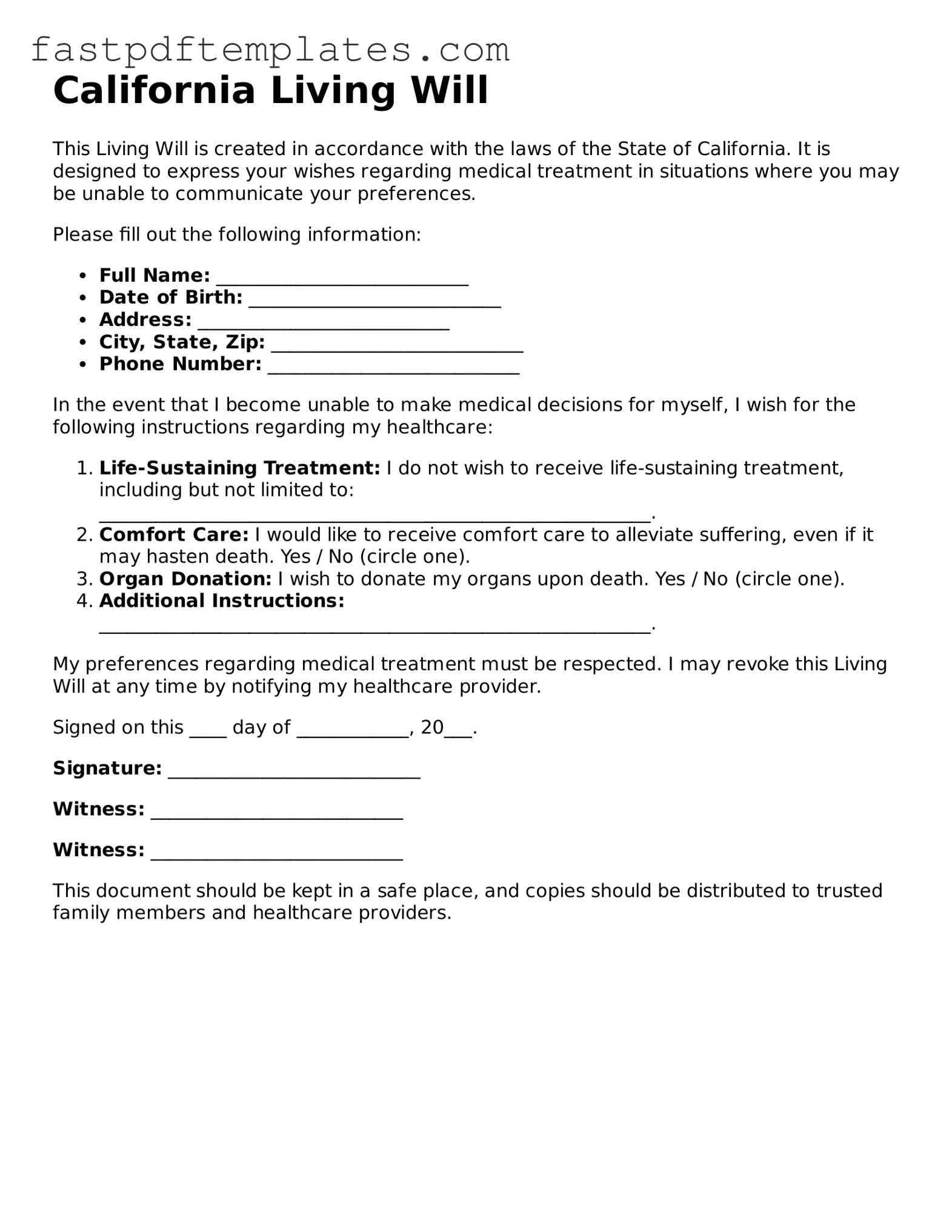California Living Will
This Living Will is created in accordance with the laws of the State of California. It is designed to express your wishes regarding medical treatment in situations where you may be unable to communicate your preferences.
Please fill out the following information:
- Full Name: ___________________________
- Date of Birth: ___________________________
- Address: ___________________________
- City, State, Zip: ___________________________
- Phone Number: ___________________________
In the event that I become unable to make medical decisions for myself, I wish for the following instructions regarding my healthcare:
- Life-Sustaining Treatment: I do not wish to receive life-sustaining treatment, including but not limited to: ___________________________________________________________.
- Comfort Care: I would like to receive comfort care to alleviate suffering, even if it may hasten death. Yes / No (circle one).
- Organ Donation: I wish to donate my organs upon death. Yes / No (circle one).
- Additional Instructions: ___________________________________________________________.
My preferences regarding medical treatment must be respected. I may revoke this Living Will at any time by notifying my healthcare provider.
Signed on this ____ day of ____________, 20___.
Signature: ___________________________
Witness: ___________________________
Witness: ___________________________
This document should be kept in a safe place, and copies should be distributed to trusted family members and healthcare providers.
